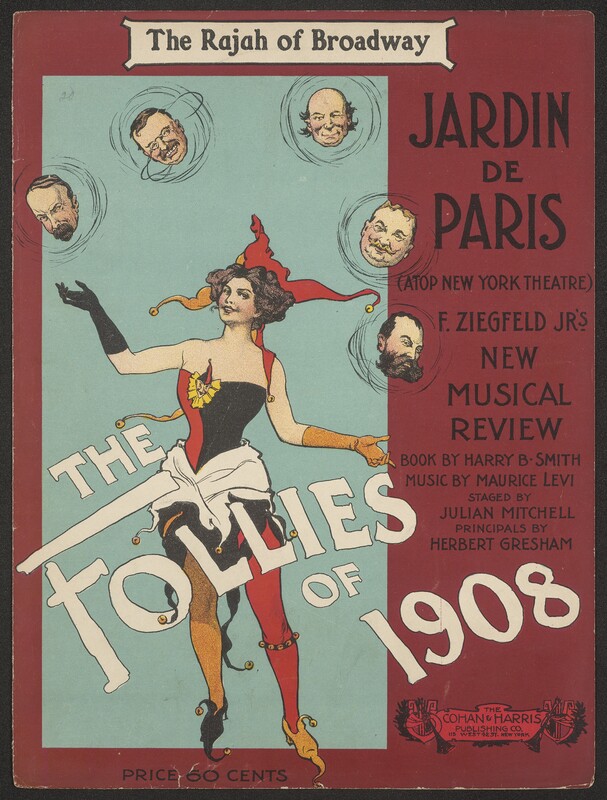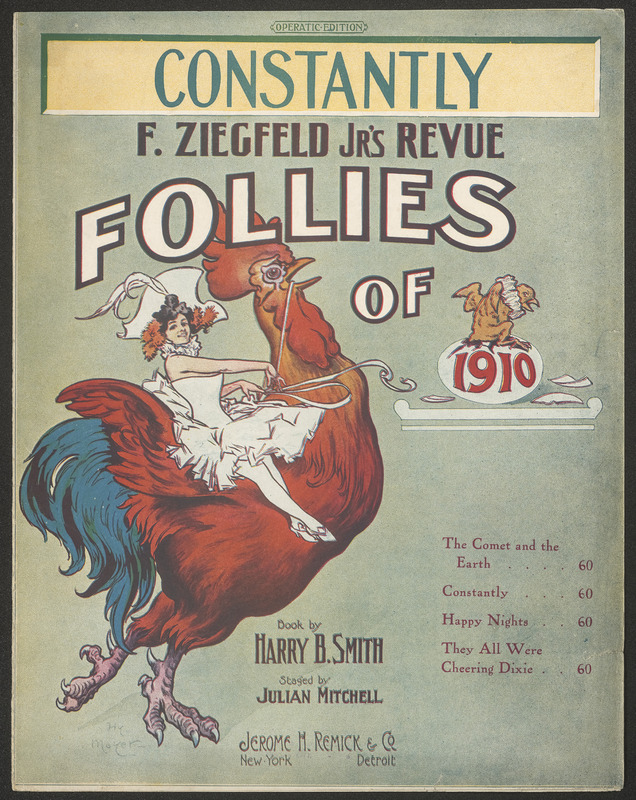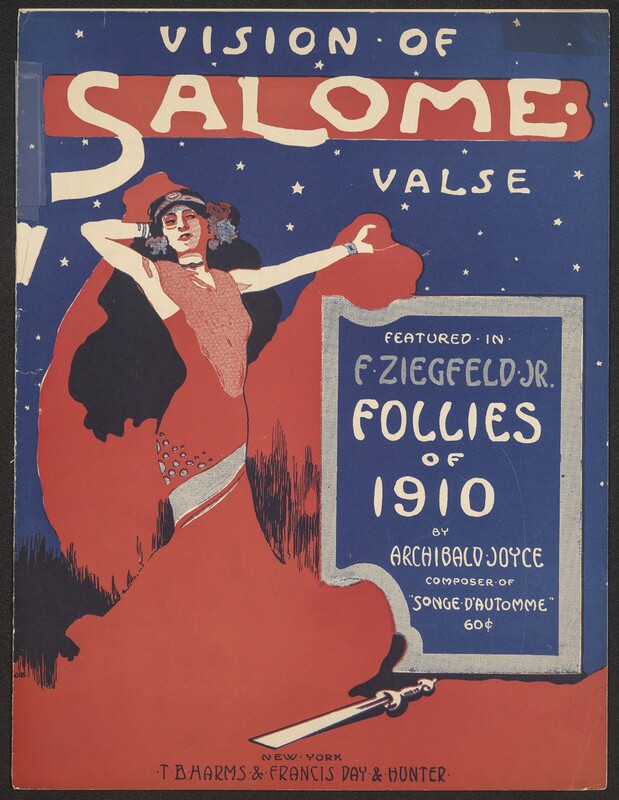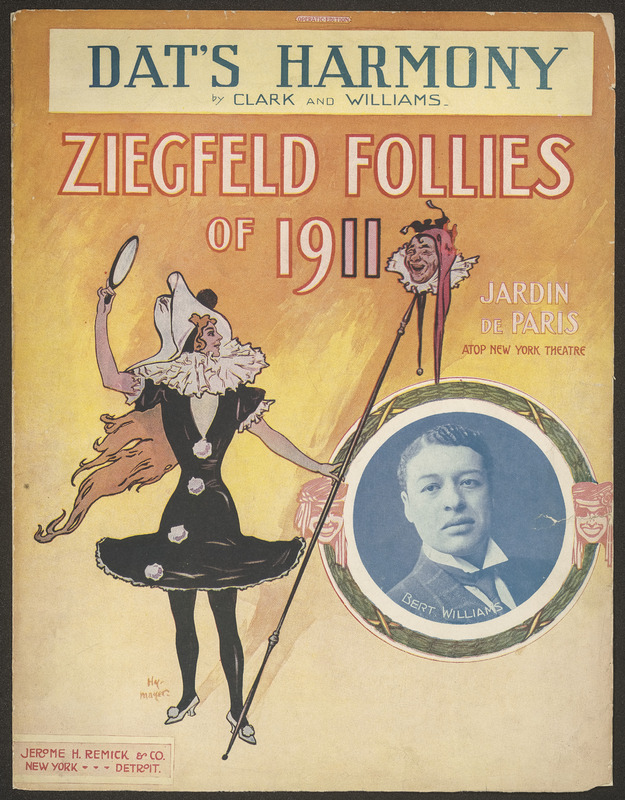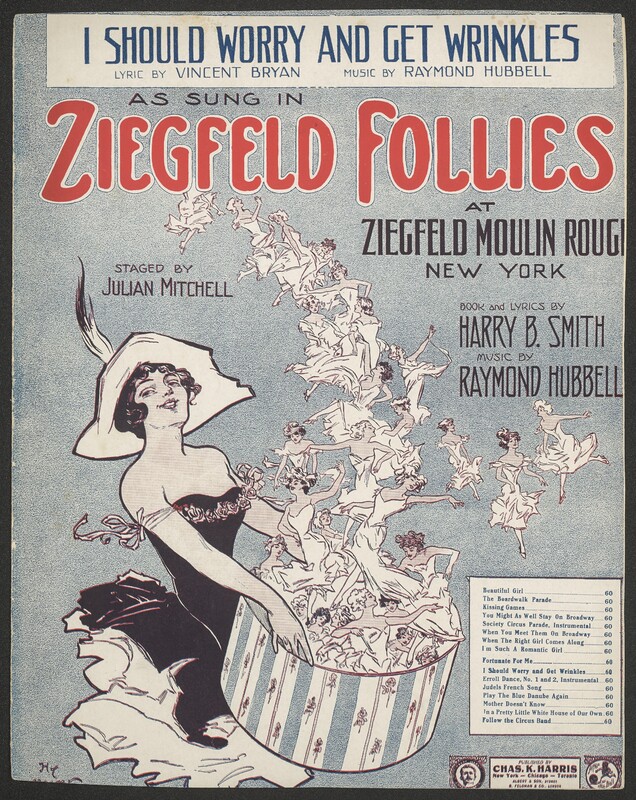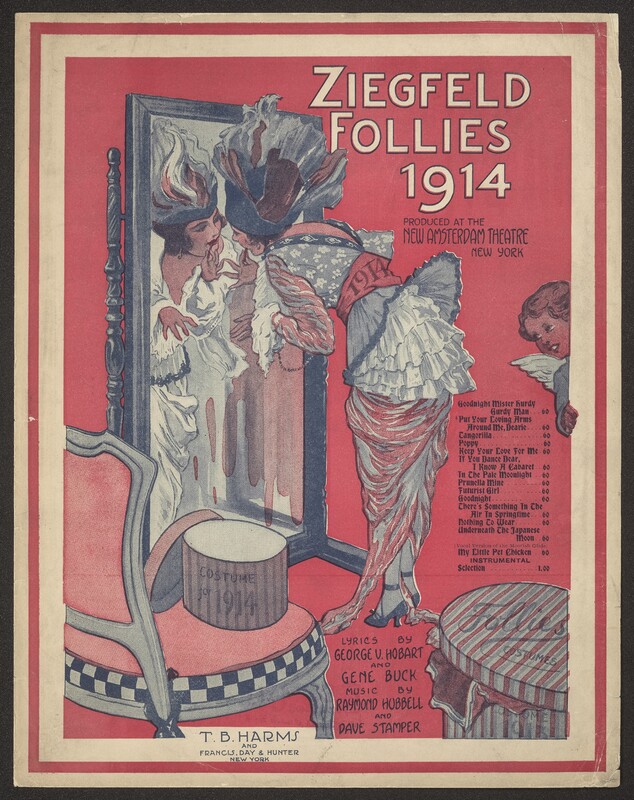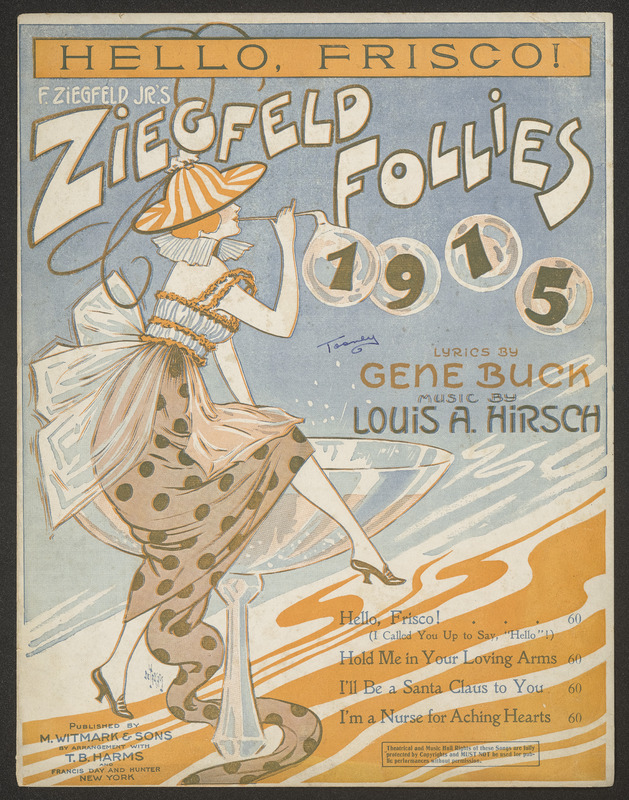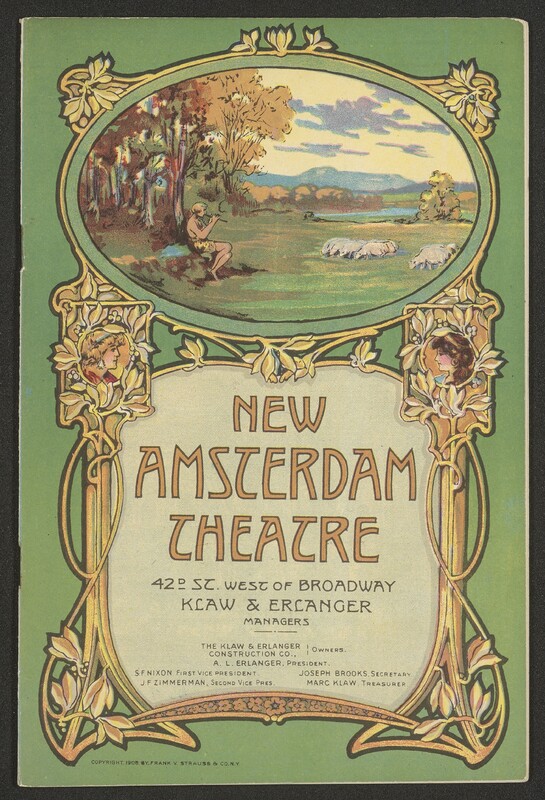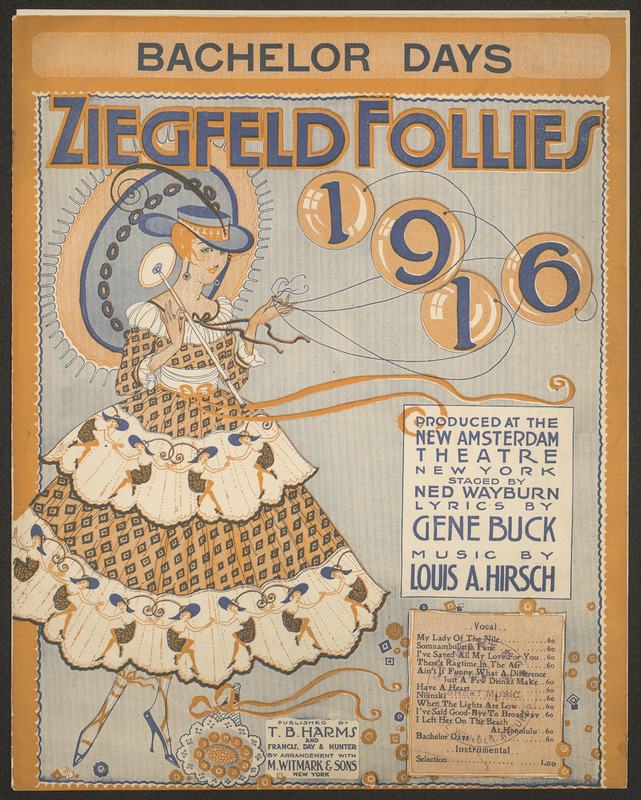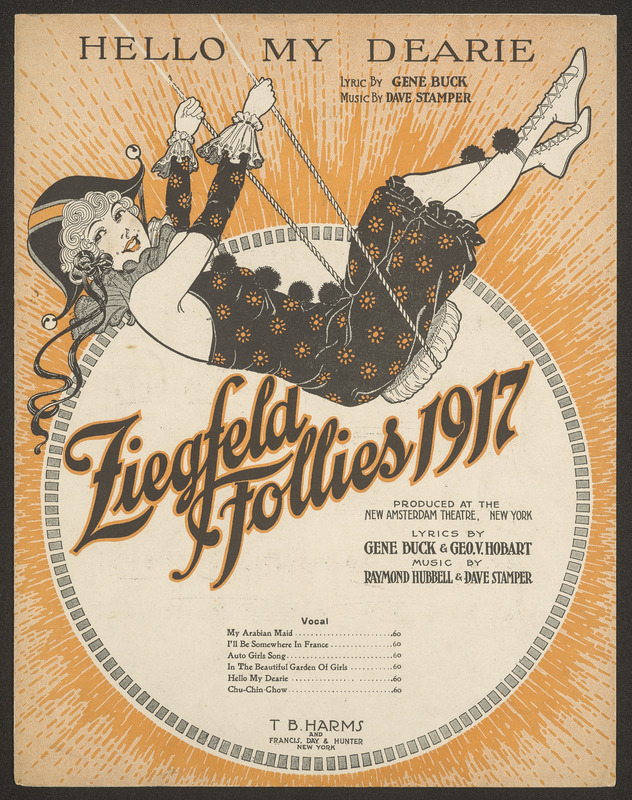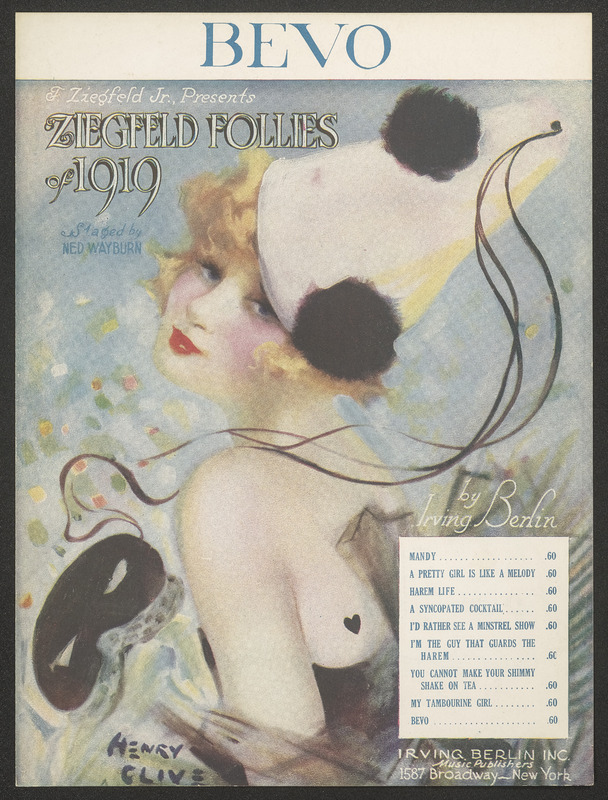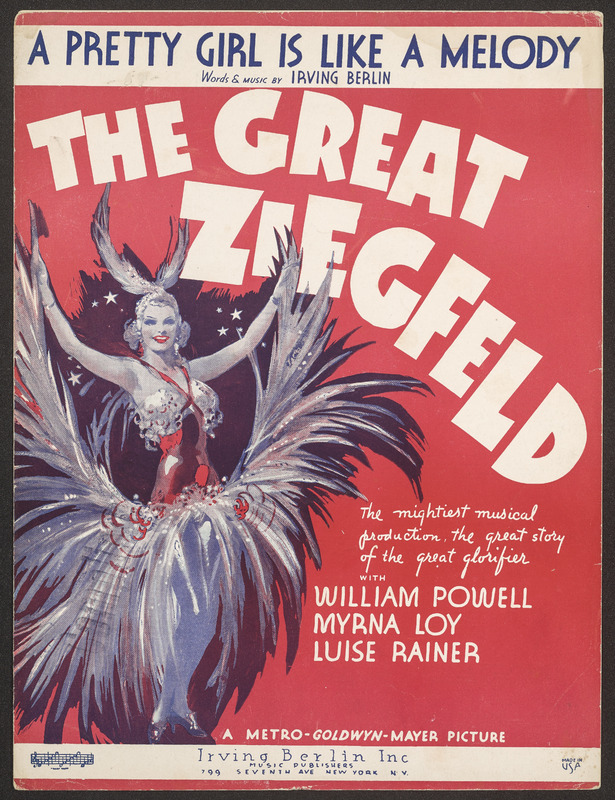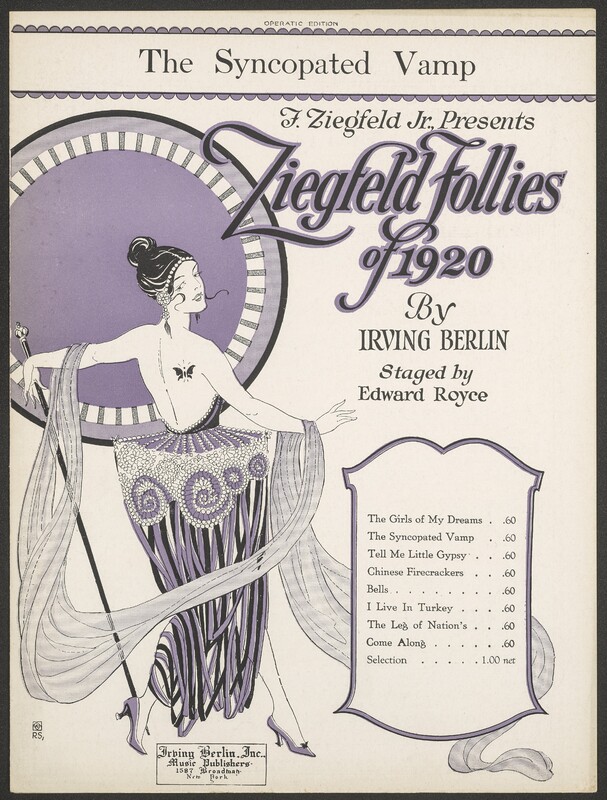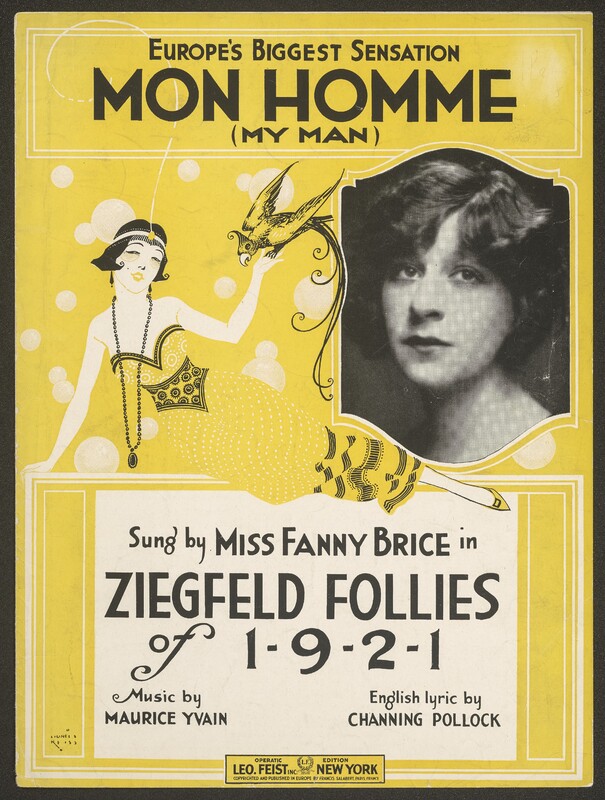Ziegfeld's Follies
Producer Florenz Ziegfeld Jr. staged his first Follies in 1907, aiming to recreate a Parisian-style variety show in New York City. The Follies became renowned for their extravagance in costume, set design, choreography, and music, and the shows’ popularity eventually influenced the nascent film industry. Music for the Follies was commissioned from popular composers such as Irving Berlin and Jerome Kern, then published as sheet music to promote the revues and bring entertainment into the home. The songs you see here are a sampling of the many lavishly illustrated Follies covers in the Lester Levy Sheet Music Collection. These songs were mass produced, advertised in window displays, and sold at affordable music stores near performance venues.
Which one would you be most tempted to buy?
The Follies of 1908 featured legendary performer Nora Bayes (1880-1928), recruited by Ziegfeld in 1907. Bayes would later walk out of the 1909 Follies due to a dispute with another legendary actress, comedian, and singer, Sophie Tucker.
The imagery of Salome on the cover of this song is representative of the Orientalist influence on popular culture. You can view more Middle East and Asian-inspired sheet music in the Bakst Theatre.
1910 also marked the Follies debut of comedian, singer, and actress Fanny Brice (1891-1951). Brice's career eventually inspired the stage musical and film Funny Girl.
This cover features a photo of composer Bert Williams (1874-1922), a Bahamian American vaudeville performer, comedian, actor, and recording artist. Williams began his stage career in a traveling minstrel show, performing in blackface. He performed in the Follies of 1910, becoming the only African American performer in the all-white cast. According to Oxford Music Online “Williams was one of the most gifted African American entertainers of his time. He is remembered today not only for his talent as a singer and comedian but also as a man whose life epitomized the struggle of the black performer against the virulence of racial prejudice in the United States. Unable to realize his highest ambitions as an actor, Williams was yet able to impart a rare humanity to degrading racial caricatures.”
The Evergreen House Foundation’s Alice Warder Garrett papers contain dozens of performance programs treasured by Alice. This one for the 1915 Follies at the New Amsterdam Theatre in New York features legendary performer Nora Bayes.
